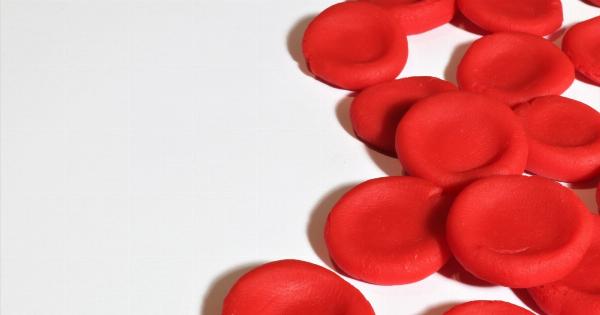True polycythemia, also known as polycythemia vera, is a rare and serious hematologic malignancy that affects the bone marrow, specifically the red blood cell-producing cells.
It is characterized by an increase in red blood cell volume, as well as elevated white blood cells and platelets. True polycythemia is often accompanied by other debilitating symptoms, and if not managed properly, can be fatal.
Symptoms of True Polycythemia
One of the most noticeable symptoms of true polycythemia is an increased red blood cell count, which causes blood to be thicker and stickier than normal. This can lead to a variety of other symptoms, including:.
- Headaches and dizziness
- Fatigue and weakness
- Shortness of breath
- Blurry vision or blind spots
- Bleeding or bruising easily
- Bloated stomach or pain in the left upper abdomen
- Nosebleeds
Causes of True Polycythemia
The exact cause of true polycythemia is not known, but it is believed to be caused by mutations in the JAK2 gene.
This gene provides instructions for making a protein called Janus kinase 2, which helps to control the production of blood cells in the bone marrow. Mutations in the JAK2 gene cause cells in the bone marrow to produce too many red blood cells, white blood cells, and platelets, which leads to the symptoms of true polycythemia.
Diagnosis of True Polycythemia
Diagnosing true polycythemia can be tricky, as many of the symptoms are common to other diseases and conditions. However, there are several tests that doctors can use to confirm the diagnosis, including:.
- Complete blood count (CBC) test, which measures the number of red blood cells, white blood cells, and platelets in the blood
- Genetic testing to check for mutations in the JAK2 gene
- Bone marrow biopsy, which involves taking a sample of bone marrow to examine for abnormal cells
- Imaging tests, such as X-rays, CT scans, and MRI scans, to look for signs of organ damage
Treatment of True Polycythemia
There is currently no cure for true polycythemia, but there are several treatment options that can help manage the symptoms and slow the progression of the disease. These include:.
- Phlebotomy, which involves drawing blood from a vein to reduce the volume of red blood cells
- Medications, such as hydroxyurea, that can help reduce the production of red blood cells, white blood cells, and platelets
- Aspirin or other blood thinners to help prevent blood clots
- Bone marrow transplant, in severe cases
Possible Complications of True Polycythemia
Left untreated, true polycythemia can lead to a variety of complications, including:.
- Heart attack or stroke due to blood clots
- Bleeding or bruising easily
- Enlarged spleen
- Liver damage or cirrhosis
- Gout
- Myelofibrosis, a condition where the bone marrow becomes scarred and loses its ability to produce blood cells
Living With True Polycythemia
Living with true polycythemia can be challenging, but there are several things that patients can do to manage their symptoms and improve their quality of life. These include:.
- Following a healthy diet and exercise plan
- Staying hydrated by drinking plenty of water
- Getting enough rest and managing stress levels
- Avoiding smoking and excessive alcohol consumption
- Keeping track of symptoms and reporting them to a doctor if they change or worsen
Conclusion
True polycythemia is a serious hematologic malignancy that can have debilitating symptoms and lead to life-threatening complications.
While there is no cure, there are several treatment options that can help manage the symptoms and slow the progress of the disease. Patients who are diagnosed with true polycythemia should work closely with their doctors to develop a treatment plan that meets their individual needs.






























